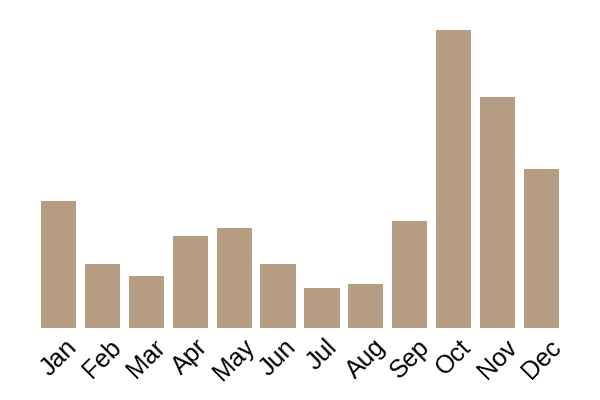А poisonous mushroom commonly found in gardens, parks, and grassy areas. It features a white cap that bruises yellow when damaged and emits a phenolic odor reminiscent of ink or iodine. This mushroom can cause severe gastrointestinal distress, including cramps, nausea, vomiting, and diarrhea. Despite its toxicity, some individuals may consume it without noticeable effects, but it is generally advised to avoid it due to its potential for harm.
The cap, when young, starts off convex and somewhat angular, gradually flattening with a central dip as it matures, reaching a diameter of 5 to 15 cm (2 to 6 inches). Initially, the cap is very white and smooth, but it darkens with age, developing greyish-brown, concentric scales, especially in dry, sunny conditions. A distinctive feature is its rapid color change to a bright yellow or yellow-orange when bruised or cut. Over time, the bruised areas may turn brown.
The gills are initially off-white, flesh-colored, as the mushroom matures, the gills transition from white to pink, eventually darkening to grey-brown. Crowded and free of the stem.
The stem is 5-15 cm (2-6 in) long and 1-2 cm (0.4-0.8 in) in diameter. It is white with a smooth surface and has a bulbous base. This bulbous base is particularly important for identification, as sometimes only the internal part of the base exhibits key diagnostic features such as an unpleasant odor and yellow staining when pressed.
The flesh is white or brownish-white, and when cut or pressed, it quickly turns from white to chrome yellow, especially at the base of the stem.
The double-edged ring is large, white, pendulous and often persists through to maturity.
Solitary and in groups, sometimes in rings.
The spore print is dark brown, sometimes with a purple tint.
Yellow Stainer mushrooms are typically found in hedgerows, grasslands, open woodlands, along roads and paths, at the edges of parks, gardens, and other areas with disturbed soil. They are saprobic, thriving on decaying organic matter.
The odor is distinctive and unpleasant, often described as resembling carbolic, ink, phenol, or iodine, which becomes particularly strong when the flesh or the base of the stem is bruised or cut.
If you have mistakenly collected this mushroom, its presence will reveal itself during cooking, as the acrid and unpleasant odor will intensify, and the dish will turn yellow.
The Yellow Stainer mushroom is toxic and can cause symptoms such as stomach cramps, nausea, vomiting, sweating, and diarrhea. Although some people might consume it without any adverse effects, it is generally not worth the risk. The majority of individuals experience unpleasant reactions, so it is best to avoid this mushroom entirely.
The Yellow Stainer can be easily mistaken for many edible Agaricus species, such as A. arvensis, A. campestris, A. bisporus, A. silvicola, and others. Fortunately, it can be distinguished by the previously mentioned characteristics: rapid yellow staining when damaged and an unpleasant odor. No edible species exhibit these traits.
- Hard, M.E. (2010) The mushroom, edible and otherwise its habitat and its time of growth. To be supplied: Project Gutenberg.
- Jordan, P. (2012) The Mushroom Guide and Identifier: The Ultimate Guide to identifying, picking and using mushrooms. Leicestershire: Hermes House, an imprint of Anness Publishing Ltd.
- Laessøe, T. (2013) Mushrooms: How to identify and gather wild mushrooms and other fungi. New York: DK.
- McIlvaine, C., Macadam, R.K. and Millsquash, C.F. (1912) Toadstools, mushrooms, fungi, edible and poisonous and one thousand American fungi.
- Your 2,300-page wildlife window on the World Wide Web (no date) Wildflowers, wild orchids, fungi, wildlife; nature books, reserves. Available at: https://www.first-nature.com/index.php (Accessed: 26 June 2024).
- Indianapolis: The Bobbs-Merrill Company.
- McKnight, K.H. and McKnight, V.B. (1987) A field guide to Mushrooms of North America. Boston: Houghton Mifflin.

